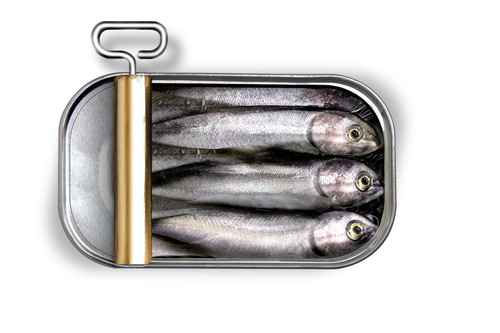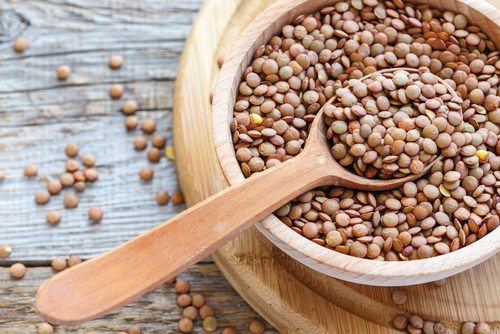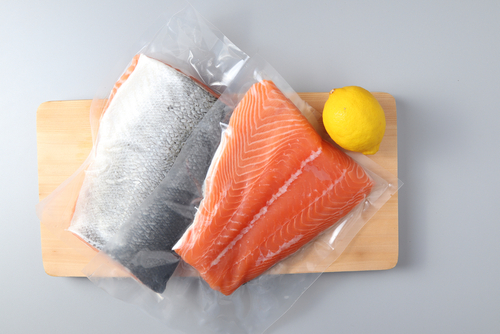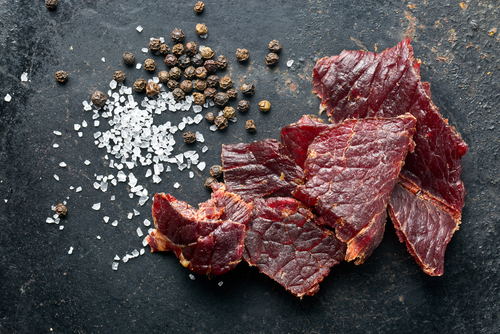No one wants to leave their home from a disaster unprepared.
That’s why it’s crucial to prepare our bag out bag ahead and pack our essentials, including food. You can look for the best (and tastiest) foods to include in your bag out bag, but also need to consider what’s the right food you can pack in it.
Your bug out bag should have all the essentials you need to survive for at least 72 hours in case of an emergency. You would not just pack all your favorite foods in the bag. Sure they taste good, but you have to choose foods that can sustain all your caloric and nutritional needs.
So which food should you pack and why? It is important to choose foods that are high in calories, protein, and fat. They should be easy to prepare as well.
1. Canned Sardines
There are a lot of substitutes to sardines when it comes to weight, but you would probably consider a can or two because it contains good amounts of protein, fat, and calories. Sardines already go well when topped on a cracker, but you can also be more experimental with simple recipes from sites like Beginner Food.
2. Nuts
Nuts weigh light and they consume little space. However, the best part about them is that they contain loads of healthy fats and calories which will help sustain your energy needs for the day.
Pistachio nuts, for example, is a flavorful nut which contains 557 calories per 100 grams. It is also loaded with vitamins and minerals.
3. Trail Mix
If not nuts alone, you can go for a trail mix. This is another great source of vitamins, minerals, and calories. Aside from nuts, you have rolled oats, puffed rice, and sometimes even dried fruit in a package. You get a burst of flavors at one time.
4. Lentils
Lentils are very high in protein and have good amounts of iron and zinc, too. They are smaller than beans that they are easier to prepare and cook. It may take 20 minutes to cook lentils in boiling broth, but this is worth it as cooked lentils still have a considerable amount of nutrients.
5. Peanut Butter
Peanut butter is high in fat and protein. A spoonful also contains 70 to 100 calories. There is no need to bring an entire jar, though, as you can buy packets of peanut butter in stores.
6. Seeds
Include seeds in your bug out bag because they are also lightweight and packed with vitamins and minerals. A serving of chia seeds (28 grams) for example, contains fiber, protein, iron, manganese, and potassium.
On the other hand, sprouts will provide more health benefits so take some paper towels with you. Spend some time to sow some seeds in wet tissue sealed in a plastic bag until they are sprouts. Sprouts boost the immune system and blood circulation.
7. Raisins
Raisins are a good source of carbohydrates, iron, calcium, and potassium. Eat raisins when you feel like your caloric levels are declining. You get 500 calories with every cup of raisins.
8. Salmon and Tuna Pouches
The great thing about pouches is that they weigh less than tins. Salmon and tuna pouches are available in stores in different flavors like lemon pepper and barbecue. It is good to have real and tasty meals sometime in your journey and a quick tuna or salmon meal will satisfy the cravings.
Tuna and salmon are high in healthy oils and contain almost the same amounts of protein and calories per serving.
9. Crackers
Crackers are good consumed alone or you can spice them up a little bit with other foods in your bag out bag. Peanut butter, sardines, tuna, or salmon will give life to the boring crackers.
Multi-grain or multi-seed crackers contain the highest levels of calories, although a piece of rectangular graham is also helpful with 59 calories in it.
10. Instant Noodles
They may not be one of the healthiest options, but instant noodles are easy to cook and contain carbohydrates. They are flavorful and contain salt, which is necessary to replenish electrolytes lost when you sweat. Still, you have to remember that too much salt will increase thirst, which puts your water supply at risk when you consume a lot
11. Instant Mashed Potatoes
There’s no need for you to bring fresh potatoes for good comfort food. Instead, bring instant mashed potato pouches and the only thing you need to do next is put hot water in it. The amount of calories in ½ cup of instant mashed potato varies by brand, but on average you get 100 calories.
12. Jerky
This dried meat is one of the best and tastiest foods to include in your bag out bag. It bursts flavor, but salt, too. Limit the amount you eat because this can cause dehydration.
Jerky is rich in protein and is ready-to-eat – great for satisfying hunger even while on the move.
13. Oatmeal
Oatmeal is another lightweight, easy-to-cook food ideal in every bug out bag. This carbohydrate-rich porridge is rich in carbohydrates making it the ideal kickstart to any day.
Oatmeal is available in pouches and in different flavors. Simply add hot water, wait for a few minutes, and enjoy!
14. Dehydrated Vegetables
It’s no secret that vegetables are important to one’s health as they are good sources of vitamins and minerals. It does not mean you need to carry fresh because dehydrated vegetables contain the same nutrition in them, almost.
Water is the primary requirement to prepare dehydrated vegetables for consumption. Soak them in water and leave for hours or overnight.
15. Protein Bars
Do not forget your protein bars when you pack a bug out bag. You will need a lot of walking and this will burn a lot of energy more quickly. Eat a protein bar while on the move and boost your protein and energy levels.
16. Protein Powder
Prepare protein powder in small packets to give you easy access to protein boosts when necessary. This may not be the first option, but it is good to have them ready, especially when all that they require is water to turn into a powerful helpful drink.
17. Electrolyte Powder
Lots of walking and physical activity will make you sweat more. Too much sweating will lower your electrolyte level and cause dehydration. Boost your electrolytes quickly using an electrolyte solution. Better safe than sorry – insert some packets in your bag out bag.
18. Honey
Bring packets of honey instead of refined sugar for a healthier way of adding sweetness to your oatmeal, drinks, and meals. Honey is high in calories and has a good shelf life. It contains vitamin B6, amino acids, thiamin, potassium, zinc, and a whole lot more.
19. Tortillas
Tortillas are a good substitute for the bulky bread. Tortillas are rich in carbohydrates that will help support your caloric needs. They are ready-to-eat and may be eaten alone or with a filling. Tortillas with salmon, tuna, or spam and vegetable filling make good-tasting dinners.
20. Coffee Sachets
There will be a time or two when you will miss a cup of coffee and it is good to know that you have coffee sachets in your bag out bag. Coffee is not high in calories but it contains caffeine which is a nervous system stimulant. It also contains magnesium, potassium, and antioxidants.
Things to Consider When Packing Your Bug Out Bag
There are many other choices for the best and tastiest foods to include in your bug out bag. Before you grab and pack them, here’s how you know if they are good choices.
- Weight vs. Caloric Value: A general rule for packing BOBs is that you avoid heavy and bulky items, especially when they can be substituted with a smaller food that contains more calories.
- Nutritional Value: Include foods that are rich in vitamins and minerals but pay more attention to protein, calories, and fat content. These are essential components to boost energy levels for surviving your daily physical activities.
- Shelf Life: Fresh foods are not an option. Go for foods that will last a long time, especially when you don’t know for sure when you will be using your bug out bag. Check the expiration dates of the products you include in your bag out bag. If food would not last a couple of days, then just forget it. Replace it.
- Taste: Don’t force yourself to like foods that you don’t. Anyway, the food on this list is not the only choice you have. However, remember to avoid foods with lots of salt. Yes, they are good-tasting meals, but they could do more harm than good sometimes.
- Preparation and Cooking: With limited resources and unavailability of the comforts of home, it will save you a lot of hard work if you go for foods that need little cooking or none at all. Ready-to-eat, dehydrated, and instant foods are the most ideal options to pack in a bug out bag.
Conclusion
The best and (tastiest foods) to include in your bag-out-bag must contain protein, fat, and the calories you need for a steady supply of energy. However, you should consider foods that are not heavy and bulky, easy to prepare, and have a long shelf life. Avoid foods with too much salt, too.











































































Sardines would be good for those who can eat them but my family has allergies to them. I think I will stick with tuna and clams and shrimp. Tuna for most of my family and the clams or shrimp for my daughter who is allergic to all fish.
Allen, I really enjoyed your article. We saw this coming years ago and slowly purchased things. After a while, we had enough to feel comfortable for six months or more of being stuck at home or worse. The main things were water, then food, shelter, solar power, ammo. We are still trying to figure out the best way to get enough water to survive long periods of being without power to the well. Anyway, good article
Zippy:
My husband grew up with a well and I will ask him how you can make the contraption that they used to bring up well water without a pump., I remember it well because the family was still using it when we were married 50 years ago. I think after we were married that they had electricity put in so they could use the pump in the well.
I have seen a torpedo bucket used on drilled wells when there is no power. It is apiece of plastic pipe that can lowered on a rope into the well casing. It fills through a one way valve in the bottom that closes when the “bucket” is retrieved with the rope. The bucket is emptied when retrieved- repeat as needed for fresh water.
I will always add plain old granulated white sugar to my bag. Even though it is not recommended to be a large part of anyone’s diet. In addition to being a simple, long lasting, light weight, high calorie flavoring, It is good to have on hand when a serious wound occurs and no doctor will be available. Depending on how long I think I might be out, I’ll vacuum seal a couple of half cups and throw them into my pack. One cup weighs just under a half pound, Half a pound should last a good long time.